BY DEFENCE JOURNALIST SAHIL | T.I.N. NETWORK
Military–Civil Fusion Capsule in Jammu Reinforces ‘Whole-of-Region’ Approach: Indian Army’s Tiger Division Leads Multi-Sector Synergy for Security, Development & Integration
Ten-Day Initiative Concludes with Vision for Collaborative Preparedness, Border Development, and Regional Resilience
Jammu | 30 October 2025:
In a compelling demonstration of India’s evolving approach to integrated security and governance, the Military–Civil Fusion Capsule (MCFC) — a ten-day, multi-stakeholder initiative organized under the aegis of the Tiger Division of the Rising Star Corps — concluded in Jammu on 29 October 2025. The initiative marked a significant stride in institutionalizing coordination between the Armed Forces, Civil Administration, BSF, Jammu & Kashmir Police, CRPF, CISF, NDRF, Intelligence Agencies, Academia, Media, Ex-Servicemen, and NGOs under a unified platform aimed at achieving seamless synergy across operational and civil domains.
A Visionary Initiative Rooted in Integration
Launched on 15 October 2025, the capsule was conceptualized to promote deeper collaboration between all arms of governance and society within the Jammu region — a zone of immense strategic importance owing to its proximity to the Line of Control (LoC) and international border. Over the span of ten days, the MCFC facilitated structured engagements, brainstorming sessions, cross-establishment visits, and thematic discussions designed to foster understanding, trust, and operational interoperability among the participating institutions.
The objective, as outlined by the Army leadership, was not only to enhance coordination during contingencies but also to create enduring frameworks for dual-use infrastructure, disaster management, and socio-economic resilience. The Army’s Tiger Division envisioned the capsule as an institutional mechanism to bring together the military and civilian apparatus under the ethos of a “Whole-of-Region Approach.”
Cross-Establishment Engagements: From Classrooms to Command Posts
The MCFC’s structure blended field exposure with academic insight. Participants undertook cross-visits to key institutions and installations, including Army units, IIM Jammu, IIT Jammu, the Divisional Commissioner’s Office, Jammu Zone Police Headquarters, and several Border Outposts along the international boundary.
These engagements provided a rare, first-hand understanding of each establishment’s operational functioning, decision-making processes, and areas where coordination could be streamlined. For example, visits to IIM and IIT Jammu encouraged academic inputs into defence logistics, innovation, and management, while tours of Army and BSF positions highlighted ground realities in border security, infrastructure planning, and civil defence preparedness.
Deliberations on Modern Security Paradigms
Specialized sessions during the capsule covered a broad spectrum of contemporary issues, ranging from Perception Management and Information Operations to Humanitarian Assistance and Disaster Relief (HADR), and from Intelligence Synthesis to Joint Police–Army Coordination Mechanisms.
Experts and senior officers led interactive panels that explored new dimensions in communication strategy, public outreach, and resilience building. The inclusion of information operations and perception management underscored the growing understanding within the military and civil ecosystem that modern conflicts and crisis management extend far beyond the battlefield — encompassing media engagement, public awareness, and the management of narratives.
Sessions on HADR highlighted the crucial role of coordination among Army, NDRF, and local administration during floods, earthquakes, and border-area emergencies. The discussions emphasized the development of rapid-response frameworks, pre-identified command centres, and community-led rescue mechanisms to minimize casualties and damage in crisis situations.
Final Session: Charting the Roadmap for the Future
The closing session, held at the Tiger Division Headquarters, witnessed the participation of eminent figures — including the Directors of IIM and IIT Jammu, the Divisional Commissioner Jammu, Inspector General of Police (Jammu Range), Inspector General BSF Jammu Frontier, Director of Planning Jammu, and senior veterans of the Indian Army.
The discussions in the final session revolved around institutionalizing the achievements of MCFC and translating its outcomes into actionable blueprints. Speakers unanimously highlighted that multi-level synergy and collaborative governance are no longer optional, but a national necessity.
The General Officer Commanding (GOC) of Tiger Division, in his concluding remarks, laid out the key takeaways from the capsule — emphasizing proposals for:
- Development of dual-use infrastructure to serve both military and civil needs.
- Construction of community bunkers for border villages to enhance civilian protection during escalations.
- River training and flood management projects to mitigate natural disasters.
- Promotion of adventure and border tourism to economically empower local communities and foster national integration.
He lauded the collective effort that made the MCFC a model of constructive engagement, setting the tone for long-term collaboration between security forces and civilian authorities in the Jammu region.
‘Whole-of-Region Approach’: Beyond Jointness, Towards Enduring Cooperation
The GOC Rising Star Corps, in his address, appreciated the depth of integration achieved during the capsule and encouraged all participants to continue the momentum beyond the event’s conclusion. He reiterated that security and development are interdependent, and that the success of the Jammu region lies in harmonizing defence preparedness with socio-economic growth.
“The idea of Military–Civil Fusion is not limited to the battlefield,” he said. “It represents the fusion of purpose, responsibility, and vision — where every institution contributes to the larger national objective of peace, stability, and prosperity. This is the essence of our ‘Whole-of-Region’ approach.”
The event was lauded by participants for bridging operational understanding with civic planning, ensuring that both military readiness and civil resilience advance hand-in-hand. It also reaffirmed Jammu’s legacy as a historical stronghold of military-civil cooperation, from border management to disaster response.
Jammu’s Legacy of Cooperation Reinforced
For decades, Jammu has served as a living example of defence-civil cooperation, given its unique geographical, cultural, and strategic setting. The MCFC, therefore, represents not a one-time interaction but a continuation of a long-standing relationship between the Indian Army and the people of Jammu — a bond characterized by trust, mutual respect, and shared goals.
By bringing together top academic minds, law enforcement agencies, and defence forces under one umbrella, the capsule laid the foundation for evidence-based policy recommendations, capacity-building programs, and community-inclusive resilience models for the region’s future.
A Model for Replication Across India
The success of the Military–Civil Fusion Capsule has prompted discussions about replicating the model across other strategic regions of India — including border districts of Rajasthan, Punjab, Arunachal Pradesh, and the Northeast. Defence observers note that this initiative aligns perfectly with India’s National Security Strategy objectives, which emphasize comprehensive national power, coordination, and societal participation in security preparedness.
By combining military precision with civil inclusiveness, the Jammu MCFC has emerged as a blueprint for integrated governance and regional stability — demonstrating how cooperative frameworks can translate strategic visions into operational success.
Conclusion
The Military–Civil Fusion Capsule in Jammu concluded not merely as an event, but as a movement towards collaborative resilience, encapsulating the spirit of modern India’s defence philosophy — one that blends military strength with civil wisdom, and security with development.
As the tricolour fluttered over the Tiger Division’s headquarters at the close of the session, one message resonated clearly across the Jammu plains — “Synergy is Strength, and Integration is the Future.”
BY DEFENCE JOURNALIST SAHIL | T.I.N. NETWORK
जम्मू में आयोजित ‘मिलिट्री-सिविल फ्यूजन कैप्सूल’ ने मजबूत किया ‘Whole-of-Region Approach’ — टाइगर डिवीजन की पहल से एकीकृत सुरक्षा, विकास और सामंजस्य का नया अध्याय
दस दिवसीय कार्यक्रम का समापन — संयुक्त तैयारी, सीमा विकास और क्षेत्रीय लचीलापन को लेकर साझा दृष्टि प्रस्तुत
जम्मू | 30 अक्टूबर 2025:
जम्मू की रणनीतिक भूमि पर भारतीय सेना के टाइगर डिवीजन (राइजिंग स्टार कोर) के तत्वावधान में आयोजित मिलिट्री-सिविल फ्यूजन कैप्सूल (MCFC) का दस दिवसीय कार्यक्रम 29 अक्टूबर 2025 को सम्पन्न हुआ। इस अद्वितीय पहल का उद्देश्य था — सशस्त्र बलों, नागरिक प्रशासन, बीएसएफ, जम्मू-कश्मीर पुलिस, सीआरपीएफ, सीआईएसएफ, एनडीआरएफ, खुफिया एजेंसियों, शिक्षाविदों, मीडिया, पूर्व सैनिकों और सामाजिक संस्थाओं के बीच समन्वय और एकीकृत कार्य संस्कृति को बढ़ावा देना।
यह कार्यक्रम “ऑपरेशनल से लेकर जमीनी स्तर तक” तालमेल और समझ को संस्थागत रूप देने की दिशा में ऐतिहासिक प्रयास रहा। ‘Whole-of-Region Approach’ की अवधारणा को मूर्त रूप देते हुए, यह पहल सुरक्षा, विकास और जनकल्याण के एक समन्वित ढांचे की ओर भारत के बढ़ते कदम का प्रतीक बनी।
एकीकृत दृष्टिकोण की ओर — ‘Whole-of-Region’ का भारतीय मॉडल
15 अक्टूबर 2025 को आरंभ हुआ यह कैप्सूल जम्मू क्षेत्र के रणनीतिक, सामाजिक और प्रशासनिक ताने-बाने को एक सूत्र में बांधने की सोच के साथ आयोजित किया गया था। सीमा क्षेत्रों में तैनात बलों, प्रशासनिक निकायों और स्थानीय संस्थानों के बीच समन्वय बढ़ाने के लिए इसे ‘सुरक्षा से विकास’ की दिशा में एक नया प्रयोग माना गया।
दस दिनों की अवधि में, प्रतिभागियों ने विचार-विमर्श, अनुभव साझा करने और cross-establishment visits के माध्यम से एक-दूसरे की कार्यप्रणालियों, चुनौतियों और क्षमताओं को समझा। उद्देश्य था — संकट के समय आपसी तालमेल को सशक्त करना, और दीर्घकालिक दृष्टि से साझा ढांचे विकसित करना, जिनमें द्वि-उपयोगी इंफ्रास्ट्रक्चर, आपदा प्रबंधन, और सीमांत क्षेत्रों में सामाजिक लचीलापन शामिल हैं।
जमीनी समझ से नीतिगत दृष्टि तक — संस्थानों का समावेश
MCFC के दौरान प्रतिभागियों ने जम्मू के प्रमुख प्रतिष्ठानों और रक्षा ठिकानों का दौरा किया, जिनमें सेना की इकाइयाँ, IIM जम्मू, IIT जम्मू, मंडलायुक्त कार्यालय, पुलिस मुख्यालय और सीमा चौकियाँ (BOPs) शामिल थीं।
इन दौरों के दौरान प्रशासनिक और सैन्य नेतृत्व के बीच प्रत्यक्ष संवाद हुआ, जिससे सीमांत सुरक्षा, लॉजिस्टिक समन्वय, और संकट-प्रबंधन की नई संभावनाएं सामने आईं।
IIM और IIT जैसे शैक्षणिक संस्थानों की भागीदारी ने यह संदेश दिया कि आधुनिक राष्ट्रीय सुरक्षा केवल हथियारों की नहीं, बल्कि प्रबंधन, नवाचार और मानव संसाधन की भी लड़ाई है।
नए युग की सुरक्षा अवधारणाओं पर गहन विमर्श
कार्यक्रम के दौरान आयोजित विशेष सत्रों में आधुनिक सुरक्षा परिदृश्य के विभिन्न पहलुओं पर गहन चर्चा की गई —
Perception Management और Information Operations, Humanitarian Assistance and Disaster Relief (HADR), Intelligence Synthesis, और Joint Police–Army Coordination जैसे विषय केंद्र में रहे।
सेना और पुलिस अधिकारियों ने बताया कि आधुनिक युग में सुरक्षा केवल सीमाओं तक सीमित नहीं है; यह मीडिया, जनता और सूचना के प्रबंधन से भी जुड़ी हुई है।
सूचना युद्ध (Information Warfare) और Public Perception आज किसी भी देश की सामरिक मजबूती का अभिन्न हिस्सा बन चुके हैं।
आपदा प्रबंधन सत्रों में यह रेखांकित किया गया कि सेना, एनडीआरएफ और प्रशासन के बीच समन्वय से ही प्राकृतिक और मानवजनित संकटों से प्रभावी ढंग से निपटा जा सकता है। इसके लिए pre-identified control centres, community-based rescue units, और real-time communication systems जैसे ढांचे विकसित करने की आवश्यकता पर बल दिया गया।
अंतिम सत्र में उभरी भविष्य की रूपरेखा
टाइगर डिवीजन मुख्यालय में आयोजित समापन सत्र में IIM और IIT जम्मू के निदेशक, मंडलायुक्त जम्मू, आईजी पुलिस (जम्मू रेंज), आईजी बीएसएफ, निदेशक योजना विभाग, और भारतीय सेना के वरिष्ठ पूर्व सैनिक शामिल हुए।
इस सत्र में यह साझा भावना प्रकट हुई कि आज के युग में “संयुक्तता (Jointness) और सहयोग (Synergy)” कोई विकल्प नहीं, बल्कि राष्ट्रीय आवश्यकता है।
टाइगर डिवीजन के जनरल ऑफिसर कमांडिंग (GOC) ने अपने संबोधन में कार्यक्रम से प्राप्त प्रमुख Key Takeaways को साझा किया, जिनमें शामिल थे —
- द्वि-उपयोगी इंफ्रास्ट्रक्चर (Dual-use Infrastructure) का विकास।
- सीमा गांवों में सामुदायिक बंकरों का निर्माण।
- नदियों के मार्ग नियोजन (River Training) और बाढ़ नियंत्रण परियोजनाएं।
- सीमा पर्यटन (Border Tourism) और एडवेंचर गतिविधियों को बढ़ावा देना।
उन्होंने कहा कि “यह कैप्सूल केवल एक कार्यक्रम नहीं, बल्कि स्थायी सहयोग और साझा जिम्मेदारी का आरंभ है, जहां सैन्य और नागरिक तंत्र एक साथ भारत की सुरक्षा और विकास यात्रा को दिशा देंगे।”
राइजिंग स्टार कोर की दृष्टि — ‘साझा सुरक्षा, साझा विकास’
राइजिंग स्टार कोर के जीओसी ने अपने संबोधन में कहा कि जम्मू में जो एकीकृत भावना इस कैप्सूल के माध्यम से विकसित हुई है, उसे केवल ‘Jointness’ नहीं कहा जा सकता, यह ‘Whole-of-Region Cooperation’ की दिशा में निर्णायक कदम है।
उन्होंने कहा —
“मिलिट्री-सिविल फ्यूजन केवल युद्ध क्षेत्र की रणनीति नहीं है, यह उद्देश्य, जिम्मेदारी और दृष्टिकोण का संगम है। जब सेना, प्रशासन और समाज एक ही दिशा में सोचते हैं — तभी राष्ट्र का सामूहिक सामर्थ्य उभरता है।”
इस पहल ने जम्मू में सुरक्षा और विकास के परस्पर संबंध को नया आयाम दिया — जहां सैनिक तैयारी और नागरिक लचीलापन (Civil Resilience) समानांतर रूप से आगे बढ़ते हैं।
जम्मू की परंपरा — सेना और नागरिकों का अटूट बंधन
जम्मू सदियों से रक्षा और नागरिक सहयोग का प्रतीक रहा है। LOC और अंतरराष्ट्रीय सीमा के समीप बसे इस क्षेत्र में सेना और नागरिक प्रशासन का पारस्परिक विश्वास हमेशा से इसकी ताकत रहा है।
MCFC ने इस ऐतिहासिक संबंध को और सशक्त करते हुए यह सिद्ध किया कि राष्ट्रीय एकता और क्षेत्रीय विकास के लिए सेना और समाज का साझा दृष्टिकोण अनिवार्य है।
इस कार्यक्रम ने भविष्य के लिए डेटा-आधारित नीतियों, सामुदायिक प्रशिक्षण मॉडलों और संवेदनशील सीमा विकास योजनाओं की नींव रखी।
भारत के अन्य रणनीतिक क्षेत्रों के लिए मॉडल
जम्मू में MCFC की सफलता ने यह संकेत दिया है कि इसे राजस्थान, पंजाब, अरुणाचल प्रदेश और पूर्वोत्तर राज्यों जैसे अन्य संवेदनशील क्षेत्रों में भी लागू किया जा सकता है।
रक्षा विशेषज्ञों का कहना है कि यह पहल भारत की राष्ट्रीय सुरक्षा नीति (National Security Strategy) के उस मूल तत्व से मेल खाती है, जो कहती है —
“सुरक्षा केवल हथियारों से नहीं, बल्कि समाज की भागीदारी से सुदृढ़ होती है।”
निष्कर्ष: ‘समन्वय ही शक्ति है, एकता ही भविष्य’
मिलिट्री-सिविल फ्यूजन कैप्सूल केवल एक कार्यक्रम नहीं, बल्कि आधुनिक भारत की सामरिक-प्रशासनिक सोच का प्रतीक है — जो सेना की शक्ति को समाज की समझ से जोड़ता है।
जम्मू के आकाश में फहराते तिरंगे के साथ यह संदेश स्पष्ट था —
“Synergy is Strength, Integration is the Future.”
टाइगर डिवीजन की इस पहल ने दिखा दिया कि जब सुरक्षा, विकास और जनकल्याण एक धारा में बहते हैं, तब एक राष्ट्र न केवल सुरक्षित बल्कि अजेय भी बनता है।


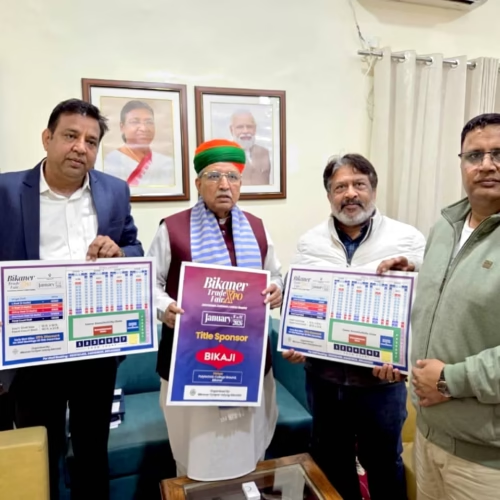
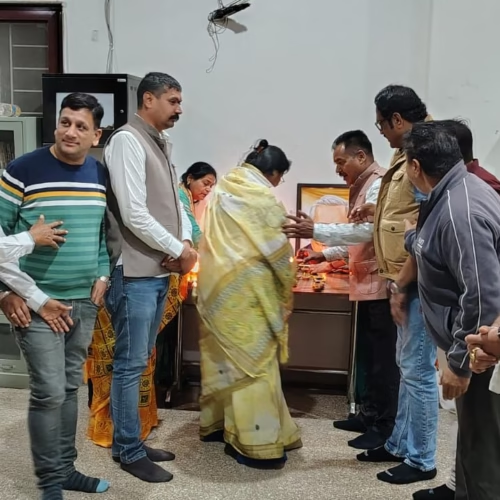
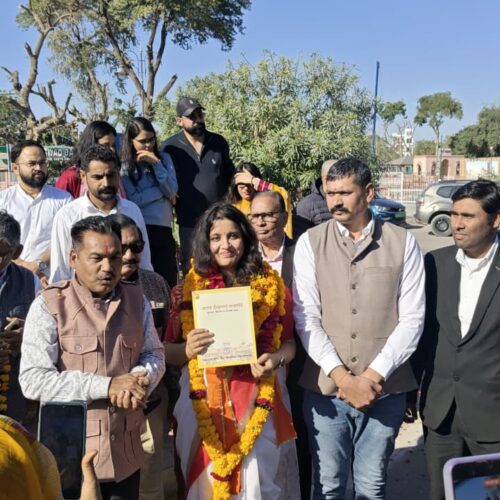
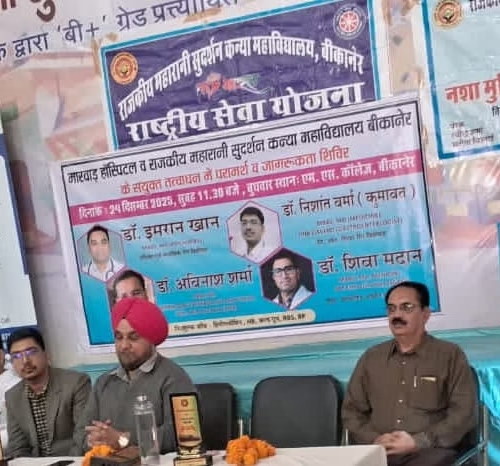
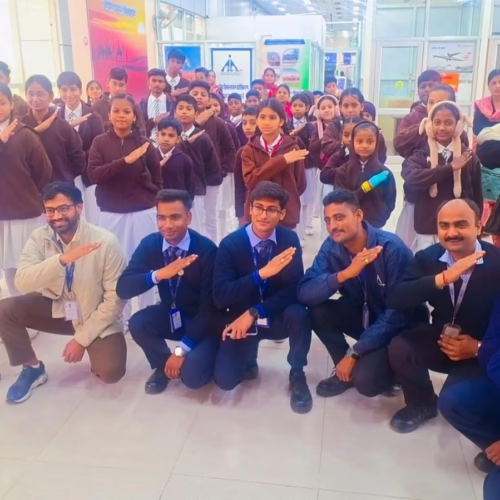

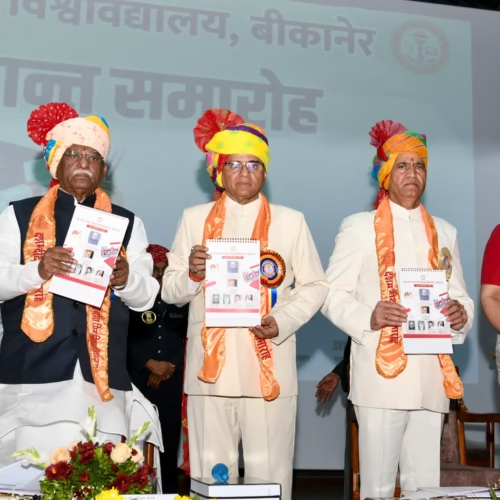
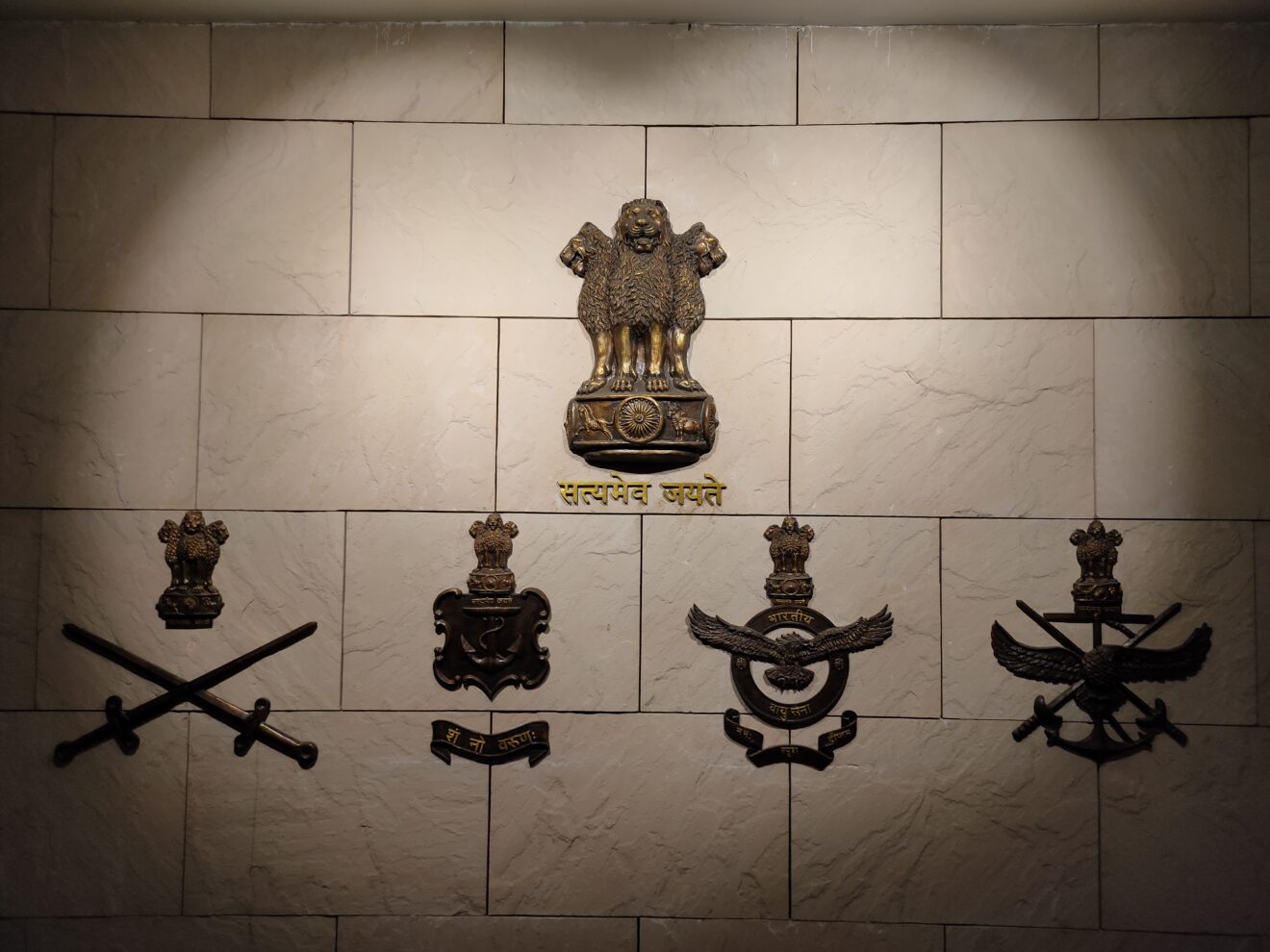




Add Comment